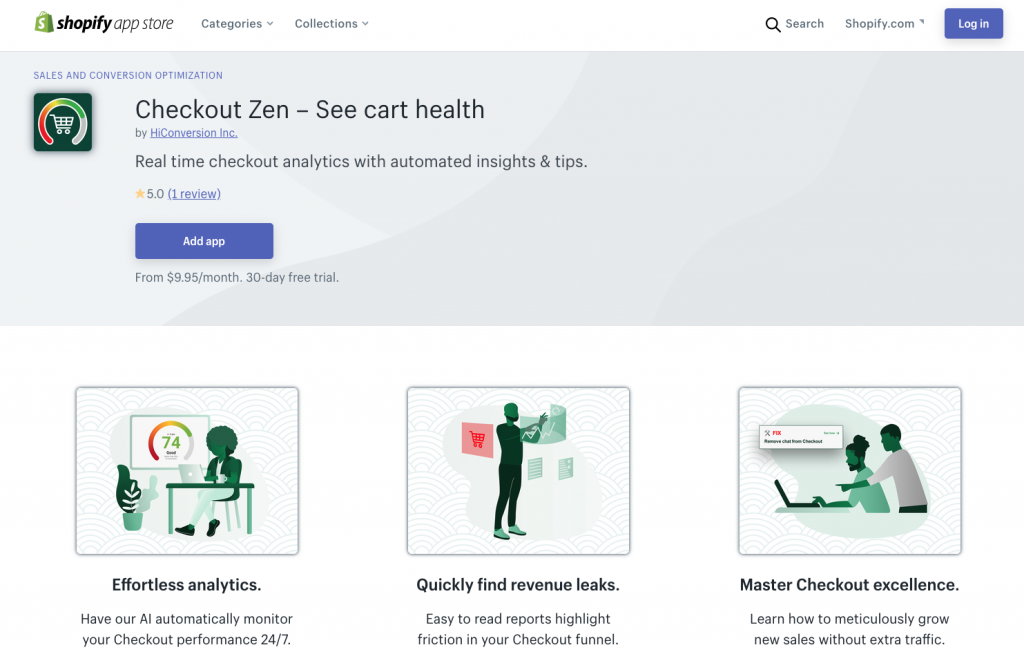Launching A Shopify App? Here Are 7 Lessons Our Product Team Learned
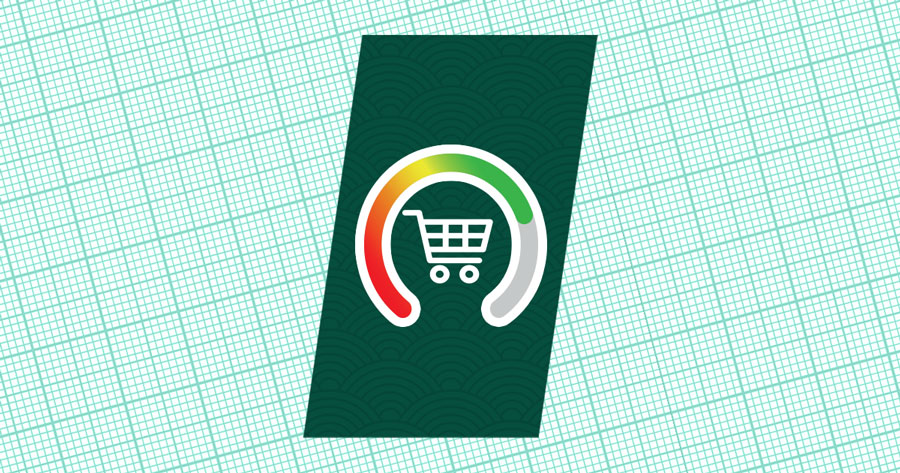
HiConversion is best known for enterprise level analytics, testing and personalization products – trusted by brands like Pat McGrath, Tula, Timex, and hundreds of other ecommerce retailers. But, it may surprise people to learn that although we have many customers on Shopify, we’ve never built our own standalone Shopify app – until now.
Not long ago, our team was looking for ways to help merchants worldwide learn more about why their customers buy (or don’t buy) on their sites. We liked Shopify’s focus on providing top-notch support to their brands, so naturally their marketplace seemed like the perfect place for us to start our own app journey.
Powering over 1 million businesses in 175 different countries, Shopify is the third largest online retailer in the US after Amazon and eBay – but what really caught our interest was the platform’s backing of entrepreneurs and giving small merchants a fighting chance against the big players in ecommerce.
That Shopify app, called Checkout Zen, has now been live for several weeks. While its still in ‘soft-launch’ phase (more on that below), I got the team together to reflect on what we’ve built and what we might share to be helpful to other Shopify app developers.
Checkout = the new #1 skill eCommerce.https://t.co/I8VKhoufAE
— HiConversion (@HiConversion) June 18, 2020
I asked David Henrickson (CTO), Aline Schneider (Senior Data Analyst) Jared Antonenkov (Product Manager), and Mark Conatser (Lead Engineer) for their thoughts on what HiConversion had learned from building our first Shopify app.
This is not an exhaustive list, but some talking points we would’ve loved to have seen before we started our own journey into the Shopify app world.
1 | We challenged ourselves to find an underserved pain point for Shopify merchants.
The idea was to create an app that turned checkout experience data into insights ecommerce teams could put to use right away. That also meant not having to consume additional resources (time, money, people) that are likely spread thin already.
If you’ve ever been part of a business just getting off the ground, you know no one has the time to worry about managing a new piece of software. It should just work.
Why checkout? Well, we simply couldn’t think of a more important step in the buyer journey than where the final decision is made: to buy or not to buy? For the first time ever, merchants can have full visibility into their checkout performance and the tools to fix it, all from a single app. It’s peace of mind for your checkout experience – that’s why we call it Checkout Zen.
But before we even started building anything, we looked around the Shopify app store to see what was already available for merchants to use in terms of checkout diagnostics. While we were happy to see plenty of apps that boost the speed of checkout and make it simpler, there weren’t any that give users an idea of how well their checkouts were actually performing.
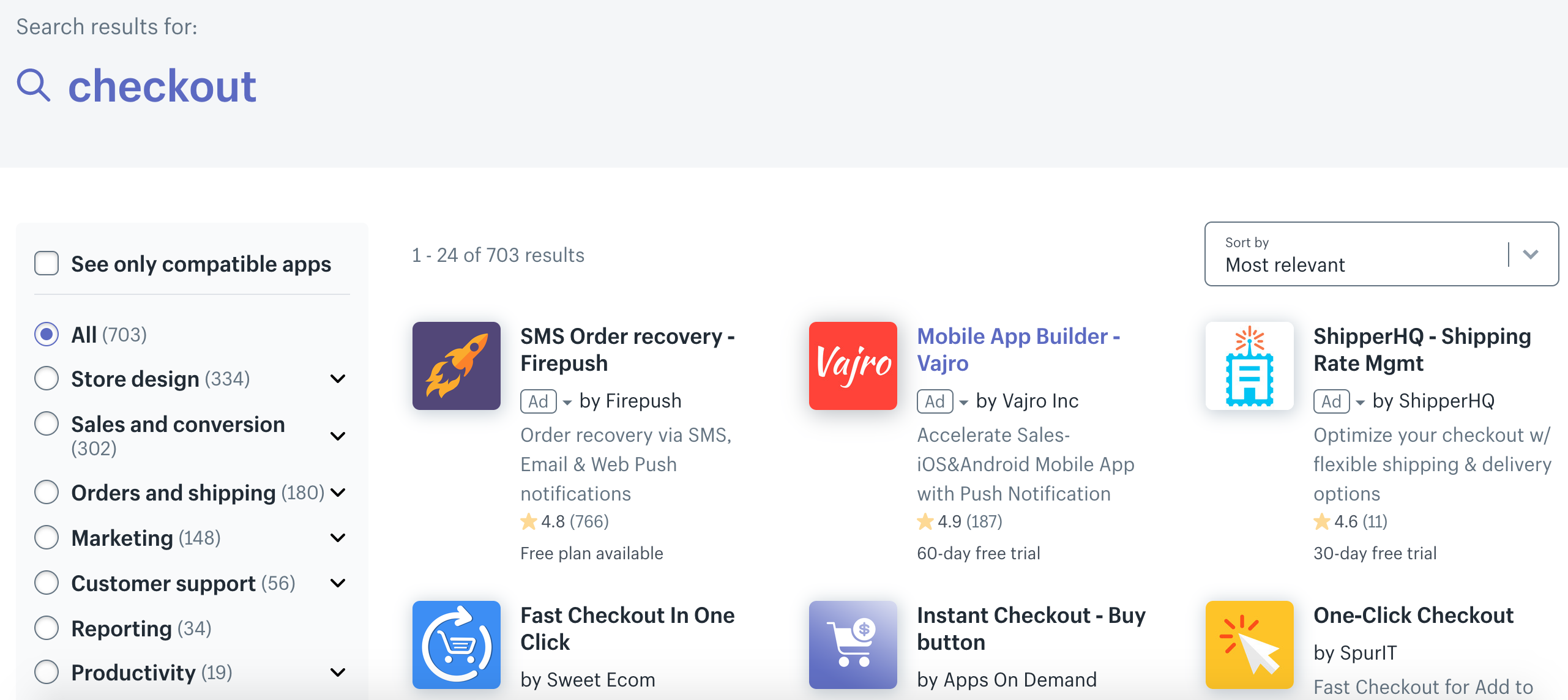
That’s when we started thinking about a new concept: Checkout Scoring. Many of us use apps like Credit Karma that determine your credit score by evaluating a multitude of factors such as payment history, age, debt, and many others.
Now, imagine having to calculate your own credit score instead of an app just doing it for you – that’s essentially the challenge merchants are facing today with their checkout. Knowing their checkout health would obviously be valuable, but who has the time to figure it out on their own?
We didn’t just come up with this out of the blue – it’s something we noticed from talking with hundreds of merchants and analyzing millions in transactions over the last few years as part of our work with the Mobile Optimization Initiative (MOI).
2 | Shopify Dynamic Checkout is a complex, potentially lucrative ‘problem’ for app developers.
Checkouts used to simply be about collecting money from visitors online – once it generally worked, teams pretty much forgot about it.
Typically, they turned their attention to attracting more traffic to their checkout, with the hope of converting more visitors. Today, checkouts need to be unique to every brand and understand how shoppers like to buy.
But, with the explosion of competing payment options, Shopify is locking certain pages in their checkout and running their own tests (in attempt to normalize the checkout experience for all its merchants).
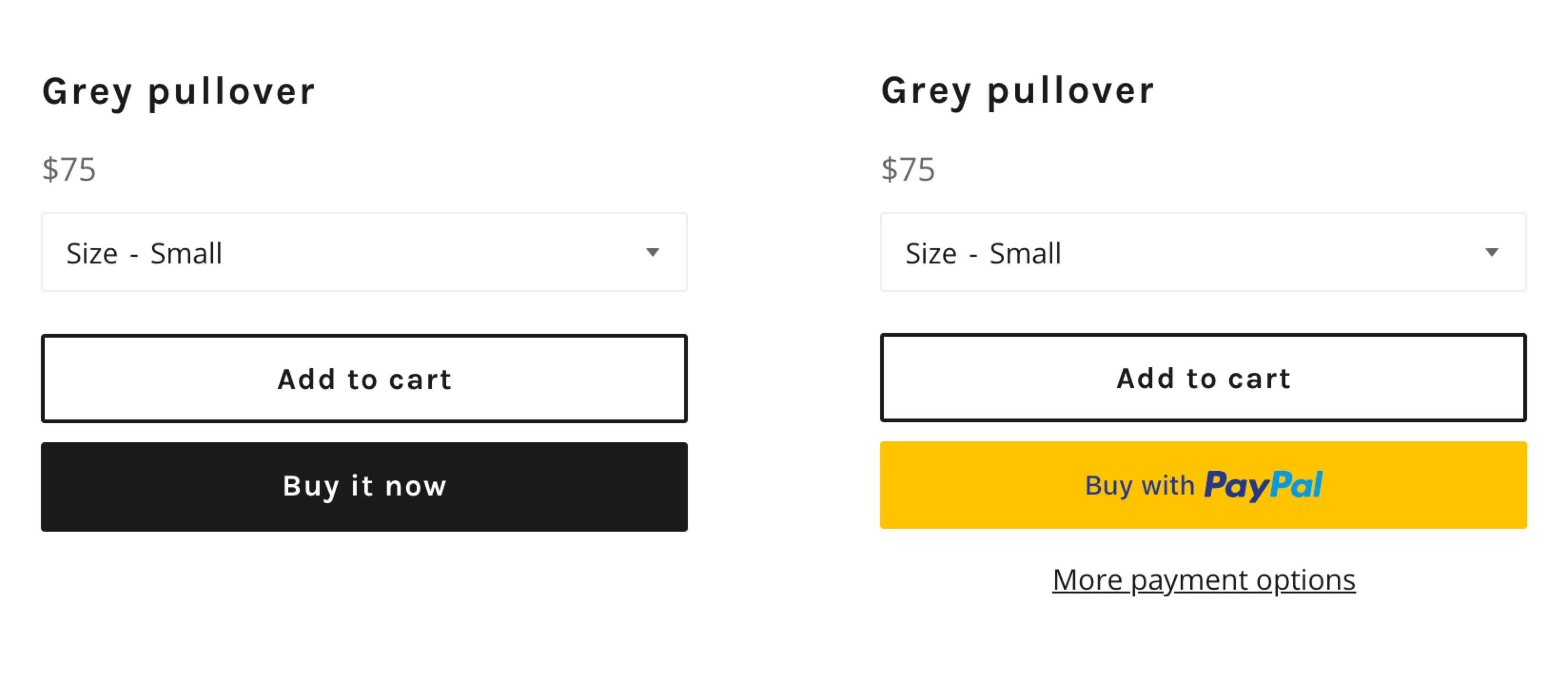
From Shopify’s Help Center: “Customers can use the dynamic checkout button to quickly buy the product they’re viewing. They skip the cart and complete their payment with the checkout method displayed on the button. The button dynamically changes to reflect the customer’s preferred accelerated checkout method.” (link: https://help.shopify.com/en/manual/online-store/legacy/dynamic-checkout)
Then there is Shopify’s Dynamic Checkout and Shopify Pay to contend with; introduced with the good intentions to standardize the buying experience. The problem is, there is nobody on top of these checkout changes. The tools, data and insights are limited.
It remains to be seen just where exactly the puck is going for Shopify checkout – but there is enough evidence to suggest they are taking it very seriously. After all, checkout and payment is a major battlefield in ecommerce: it’s where the REAL money is.
In fact, payment and checkout is at the heart of ‘Merchant Services’ – Shopify’s other revenue stream (reported on separately from its core ‘Subscription Solutions’ earnings). It includes shipping services, transaction fees, and point-of-sale hardware sales.
3 | Invest early in a strong foundation if you plan on building more Shopify apps.
From the Shopify app side, one interesting thing we’re doing technically is the delivery and management architecture we’ve created.
David (our CTO) couldn’t share too much as it’s super top-secret stuff, but we can say it may be wise to think about how your first Shopify app will fit with the next one, and the next, and so on – and how they all may or may not need to communicate with each other.
“The simplicity of our interface betrays the complexity and technical ingenuity behind-the-scenes.”
– Jared Antonenkov, Product Manager
Ultimately, your customers do not care how you deliver your app – only that it works. However, we realized this infrastructure was a critical part to our commercial strategy. Earlier this year we were inducted as one of the first Partners into the Shopify Plus Certified App Program – this alone meant we had to fulfill advanced app requirements to ensure quality and performance.
Throughout the rest of 2020 and into 2021, we have committed to launch more apps onto Shopify. This means with our early investment in this foundation, our engineering team will not have to repeat this (non-trivial) work for each app.
4 | Building a Shopify app helped us realize we needed to up our customer research game.
When I talked to Jared, he emphasized the importance of involving users in an early stage of development for all products, not just Shopify apps. We knew ‘voice of the customer’ could be a powerful resource for us.
Voice of the customer is a term that describes your customer’s feedback about their experiences with and expectations for your products or services.
For example, Checkout Zen requires a data collection period which, depending on the size of the merchant, can take 1-2 weeks. That’s quite a long time to provide a quick win for the user! For some merchants, it can take months, in which case even a one-month free trial would not be enough to get initial value from the app.
“I’ve learned the importance of listening to the customer when developing a product that will really help solve an inherent problem facing merchants every day.”
– Mark Conatser, Lead Engineer
Verifying users’ attitudes to this period of data collection in an earlier stage would have helped us better know our audience, rethink on-boarding experience, pricing model, and even launch strategy.
Now we are trying to address these issues as we go along – which is ok, too.
When it came to actually gathering the voice of the customer, I designed a program to help us make the most of this activity. Starting with our existing customers and partners – already on Shopify – we invited them to install a beta-version of Checkout Zen.
In this period we observed customers install the app via video shared screen, and asked them to ‘think out-loud’ as they began the on-boarding process. We asked them a few open ended questions (probes) to gently guide the conversation to the areas we wanted feedback.
What we learned from these short sessions, was pivotal in how we started to challenge our own assumptions about what we were building. I started to share little recaps with my team.
5 | Be okay with launching quietly at first, but be ready to iterate quickly.
Knowing when and how to launch a new product can feel a lot like a paradox. Many teams get stuck in the common ‘chicken vs egg’ feedback loop. Launch too late and you risk over-investing in a solution nobody wants; launch too early and you risk massively undercutting the value of your product.
In our case, ‘time to learning’ was the main driver. We wanted to launch quickly so we could accelerate our learnings – as I mentioned above, this won’t be our only app on Shopify. We knew we could afford to make a tradeoff on feature completeness in order to start getting this into merchants’ hands.
That said, we deemed it wise to follow a launch program to help align
- various internal teams,
- stakeholder expectations, and
- market demand.
Because there was no-need to reinvent the wheel, I suggested we borrow from Google Cloud’s ‘Product Launch Stages’ (a framework I have used successfully throughout my career). Here’s how they define it:
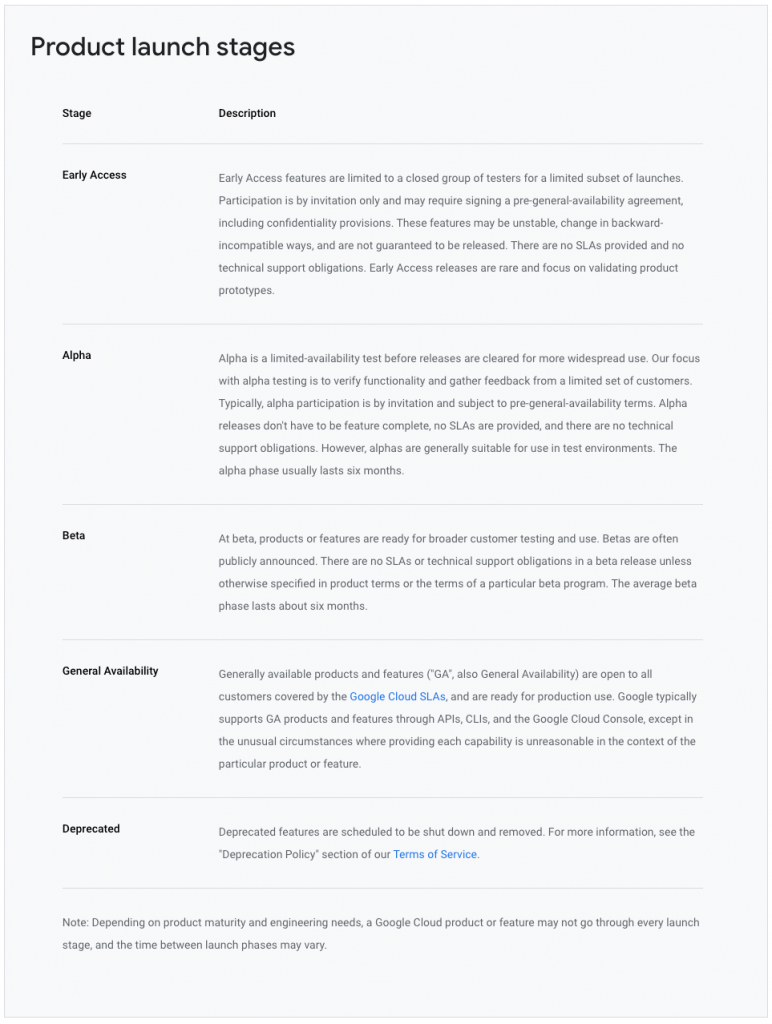
Google Cloud products follow a standardized launch cadence. We borrowed much of this thinking to guide our own launch planning. (Link from Google Cloud: https://cloud.google.com/products#product-launch-stages)
This quickly got us all on the same page and educated the wider company on how we can successfully define and manage a launch of a new product. Example: I have seen in the past, teams define ‘Launch’ as a single event. However, to Launch – as an act – is, in reality, an ongoing behavior.
In an unexpected twist, our launch philosophy helped us appreciate implications of formally announcing the release of Checkout Zen. We had assumptions that we had to have major PR push in order to drive initial awareness of Checkout Zen, however, and as you’ll learn in the next section, this was not the exactly the case.
Pro tip: launch with an MVP to get thru Shopify submission process and keep it unlisted until you have time to perfect it and choose to make it publicly listed.
6 | Uniquely branding your Shopify App listing matters, but also sometimes it doesn’t.
“Checkout Intelligence” was our first attempt at a name. After receiving feedback from a group of trusted advisors, we realized it needed to embody a more outcome–based and standalone name.
We got closer with “Checkout Nirvana,” but as much as we love our 90s grunge, we knew it still needed some work.
“Checkout Zen” really hit the spot for us – is everyone going to love it? Maybe. Does your app’s name really matter? Depends.
It’s a matter of strategy as to whether you invest in a branded name, use your existing company name or just leverage a keyword to describe what it does. For us, it was important to have a branded app name, that was separate from our main company ID. We knew we would eventually be marketing this outside of Shopify ecosystem.
For those ONLY selling inside the Shopify app store, it would make sense to name your app to take advantage of how Shopify aids discovery (we’re talking keywords and categories).
Below is today’s app listing for Checkout Zen. Take a good look – it will probably have changed by the time you finish reading this article 😉
Since launching Checkout Zen, we have probably edited our listing page 100+ times.
All the best intentions we had about creating a ‘perfect’ listing page BEFORE making it live, quickly went out the window. As a former designer, this was personally a hard pill to swallow.
Now, that is not to say the content and visual design of your listing page is not important. However, we quickly realized the game was how to get more visitors from the app store search results and how to get more of those visitors to click ‘Add app’.
Right now, the #1 thing that helps with our discoverability is the keywords used in our App name and App description. And, with Shopify’s (currently) rudimentary search ranking, this is a quick way to affect positions on search result pages:
- App name suffix (Shopify allows you the freedom to add keywords/phrases here too; we recommend it).
- App name description (Proceed with caution: You can literally change your entire addressable market through this input field. We tried to be cute and use marketing lingo here. Turns out a simple, relevant keyword-y description works way better. Sorry, but people are not searching for your catchy strap-line smarts.)
Small tweaks can have a HUGE, immediate impact. Example: We changed our strap-line, added a shinier logo and we saw 5x installs within the next 24hrs.
I won’t get into App Store Ads in this post – it demands its own deep dive – but that world is very much driven by keyword literacy too.
7 | The importance of good data for Shopify, and the need to validate it.
The critical part of a high-performance analytics application is the veracity of input data, in this instance visitor interactions with a Shopify store. Bad data in, affects the whole system and will result in bad data out.
According to Jared, instrumenting the Shopify checkout funnel – and mapping to uniformed metrics in order to generate a global scoring system – were the challenges we encountered and overcame when trying to collect the ‘perfect’ representation of checkout data.
We started by defining a set of checkout KPIs, to standardize how we collect and communicate data. Here’s an example from the final UI of Checkout Zen, we use 5 KPIs to build our overall Checkout Score:
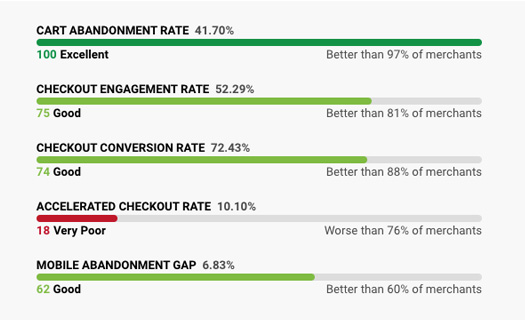
Our in-house Data Analyst team were invaluable collaborators to help us validate the data we were collecting, and ensuring its accuracy. We had a methodology to cross reference what we saw in Checkout Zen with the analytics in the HiConversion platform. This meant we could establish a ground truth to always refer back to – if it didn’t match (on either side) we knew we had a problem to investigate and fix.
“As part of fine-tuning Checkout Zen, it was important to compare all the metrics with our platform, to ensure data quality, that the numbers were lining up and made sense.”
– Aline Schneider, Senior Data Analyst
If you find yourself building an analytics app like Checkout Zen, think carefully about how you can evaluate the integrity of your data. Do not assume all Merchant are experts at data literacy. Recognize that in using your app, merchants put a critical aspect of their business in your hands, so you have to take their data seriously. Always remember it is forever theirs, not yours.
Finding your place in the Shopify app store.
What we’ve learned ‘on-the-job’, combined with our deep knowledge of the complexities of integrating advanced analytics into a first–of–its–kind Shopify app, is something we get to pass on to the wider engineering community today.
We have felt the pain on our skin that any developer may feel building something new for the first time. We now have a unique perspective to share our advice and learnings with those who also aspire for better, more inclusive commerce.
Yet – we continue to be students of Shopify app store. Stay tuned, I’ll be sharing more perspectives from our Shopify journey in the coming weeks and months.
In the meantime: Learn more about Checkout Zen.

